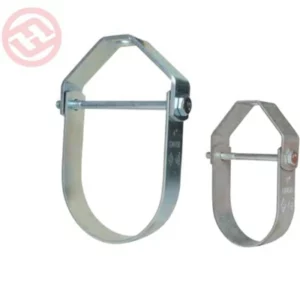Installing and connecting a fire protection valve in a fire protection system typically involves the following steps:
Determine Valve Location: Identify the appropriate location for the fire protection valve based on the system design and requirements. This may include considering factors such as accessibility, proximity to fire hazards, and compliance with applicable codes and standards.
Shut Down the System: Before installing the valve, ensure that the fire protection system is completely shut down and depressurized to prevent any accidental discharge or release of extinguishing agents.
Prepare the Piping: Cut the piping to the required length, ensuring that the ends are clean, smooth, and free from burrs or debris. If necessary, thread or weld the pipe ends as per the system specifications.
Install Valve Body: Position the fire protection valve in the desired location within the piping system. Align the valve body with the pipe ends and insert the pipe ends into the valve ports. Ensure a proper fit and alignment.
Make Connections: Depending on the type of valve and system design, make the necessary connections to secure the valve body to the piping system. This may involve using threaded connections, flanges, or welding techniques, following the manufacturer’s instructions and industry standards.
Use Proper Sealing: Apply an appropriate sealing method to ensure a leak-free connection between the valve and the piping. This may include using gaskets, sealants, or other sealing materials as recommended by the valve manufacturer.
Install Valve Actuator: If the fire protection valve requires an actuator, such as a handle, lever, or electric actuator, follow the manufacturer’s instructions to install it securely. Ensure the actuator is in the proper position to control the valve’s opening and closing.
Secure and Support: Securely fasten the valve assembly to the surrounding structure or support using appropriate brackets, clamps, or hangers. This helps prevent stress or strain on the valve and ensures stability.
Perform System Checks: Once the valve is installed, perform a thorough inspection of the entire system. Check for proper alignment, tightness of connections, and any signs of leaks or damage. Conduct a pressure test and functional test to ensure the valve operates correctly.
Documentation and Labeling: Properly document the installation, including valve specifications, location, and any other relevant information. Apply appropriate labels or tags to identify the valve and indicate its purpose within the fire protection system.
It’s important to follow the manufacturer’s instructions, industry standards, and local regulations when installing fire protection valves. If you are not familiar with fire protection systems or lack the necessary expertise, it is recommended to consult with a professional fire protection engineer or contractor for proper installation and compliance with applicable codes and standards.
How does a fire protection valve differ from a regular valve used in plumbing or industrial systems?
A fire protection valve differs from a regular valve used in plumbing or industrial systems in several key aspects:
Purpose and Function: The primary purpose of a fire protection valve is to control the flow of water or other fire suppressant agents in a fire protection system. Its main function is to activate and release the extinguishing agent when a fire is detected. In contrast, regular valves used in plumbing or industrial systems are typically designed to control the flow of fluids for various purposes, such as regulating the supply, directing flow, or isolating sections of the system.
Activation Mechanism: Fire protection valves are designed to activate automatically in response to specific fire detection systems or triggers. They are often connected to fire alarm systems, sprinkler systems, or other fire detection devices. Fire Protection valve Regular valves used in plumbing or industrial systems, on the other hand, are typically manually operated or controlled by other means, such as pressure, temperature, or flow sensors.
Fire Resistance: Fire protection valves are constructed with materials and designs that enhance their fire resistance capabilities. They are often made of materials that can withstand high temperatures and are resistant to fire-related damage. Regular valves used in plumbing or industrial systems may not have the same level of fire resistance and may be more susceptible to heat or fire damage.
Compliance with Standards: Fire protection valves are specifically designed and manufactured according to recognized industry standards and regulations for fire protection systems. These standards ensure that the valves meet specific performance criteria, such as reliability, durability, and compatibility with other fire protection components. Regular valves used in plumbing or industrial systems may adhere to different standards and specifications relevant to their specific applications.
Testing and Maintenance: Fire protection valves require regular testing and maintenance to ensure their proper functioning in the event of a fire. These valves are often subject to more stringent inspection and testing requirements compared to regular valves used in plumbing or industrial systems. Fire protection valves may need periodic flow tests, lubrication, seal inspections, and other maintenance procedures to ensure their readiness for fire suppression.
Labeling and Identification: Fire protection valves are typically labeled and identified as such to distinguish them from regular valves. They may have specific markings or tags indicating their purpose, flow direction, and other relevant information. Regular valves used in plumbing or industrial systems may have different labeling or identification methods based on the specific application or industry requirements.
It’s important to note that while there are differences between fire protection valves and regular valves, there can also be variations within each category based on specific applications and system requirements. It is crucial to consult the manufacturer’s instructions and relevant standards to ensure the correct selection, installation, and operation of valves in their respective systems.
